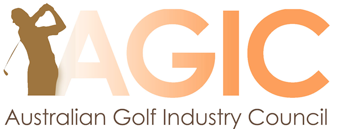Golf participation across Australia is on the rise according to new data released by the Australian Golf Industry Council (AGIC). An increase of 7.2 per cent in competition rounds was recorded across Australia in 2014, with every month recording a steady increase compared to the corresponding month in 2013.
 Competition rounds are defined as single handicapped rounds only and excludes rounds played from non-handicapped events. Rounds played by male golfers grew by 7.4 per cent while a pleasing increase in female participation was also recorded, rising by 6.2 per cent.
Competition rounds are defined as single handicapped rounds only and excludes rounds played from non-handicapped events. Rounds played by male golfers grew by 7.4 per cent while a pleasing increase in female participation was also recorded, rising by 6.2 per cent.
Growth was evident across all states through 2014 and consistently spread across metropolitan and regional areas.
Australia had a relatively mild and dryer winter in 2014 with many parts of the country experiencing rain deficiencies compared to the year prior, resulting in extended opportunities for golfers to get on course.
Queensland and South Australia stood out as the best performing states in 2014. An exceptionally strong first quarter gave Queensland the largest increase of 13 per cent. The Brisbane market accounted for approximately one quarter of all rounds played in Queensland, generating a double-digit gain of 14.7 per cent. South Australia followed, recording a 10 per cent increase in rounds played.
Chairman of the AGIC and Chief Executive Officer of the PGA of Australia, Brian Thorburn, was delighted with the latest figures, suggesting the increase may be attributed to the success Australian Professionals have had on the international stage over past 12 months and Australia’s ability to attract the best golfers in the world to Australian tournaments, both male and female.
“There are a number of factors that may have contributed to these growth figures,” said Thorburn. “In the past 12 months we have seen four of the world’s top-10 Pros play in Australian tournaments, had 10 Australian Pros win on International Tours, six of these being on the PGA TOUR, and witnessed Adam Scott rise to World Number one. Together, these moments build excitement for golf and stimulate amateur golfers.
“We are also lucky that our Australian champions return home regularly to play and interact with fan’s which pays dividends for participation,” added Thorburn.
With golf featuring on the Olympic schedule for Rio in 2016, there is potential for this global platform to have an influence on golf’s continued growth in Australia.
Earlier this month, the United Kingdom released data showing a 3.5 per cent upsurge in competition rounds played – 3.7 per cent less than the soaring growth recently experienced in Australia.
Established in 2006, the AGIC brings together representatives from the major Golf Industry bodies and works as one to promote golf and industry wide initiatives.
Members of the AGIC include the Australian Golf Course Superintendents Association, Australian Ladies Professional Golf, Australian Sporting Goods Association, Golf Australia, Golf Management Australia, PGA of Australia and the Society of Australian Golf Course Architects.
Media contact
Bronwyn Slatter
Communications Coordinator, PGA of Australia
bslatter@pga.org.au
03 8320 1955

